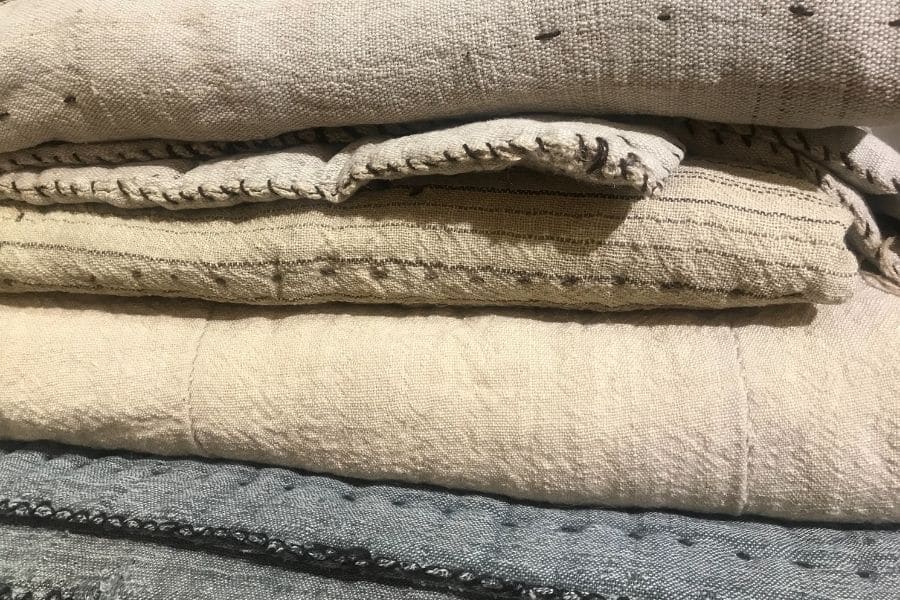Excellent Tips To Deciding On Bamboo Clothes
Wiki Article
Why Is It That Hemp Is Stronger, More Durable, And More Biodegradable Than Cotton?
Hemp is considered more biodegradable because of its inherent qualities and the method in which hemp grows. Here's why- Biodegradability-
Natural FiberNatural Fiber Hemp fibers are the plant which is biodegradable. Clothing and textiles made from hemp break down in time. That means they can be returned to nature without leaving any waste. This is in contrast with synthetic fibres such as polyamide, which degrade over the course of hundreds of years.
Hemp textiles are devoid of chemical additives and synthetic chemicals that can affect biodegradability. They are treated with synthetic chemical additives, such as certain dyes or finishings that slow the biodegradation process.
Durability-
Hemp fibres are known to be strong and durable. Hemp clothing is less susceptible than cotton clothing to wear out, and so lasts longer. The durability of hemp clothing allows it to endure a greater number of washing cycles and wear cycles with no signs of degradation.
More tolerant of PillingLess prone to pilling Hemp fabrics are less prone to pilling (the formation of small fuzzy balls that form on the surface of the fabric) compared to cotton. This is a factor that helps to prolong their life as well as overall quality.
Regenerative Agriculture-
Soil Health Hemp cultivation has regenerative properties when it is done responsibly. Hemp cultivation that is sustainable has a deep-rooted system which will help prevent compaction of the soil. This root system also helps to prevent erosion. The regenerative qualities can make the land better suited to future crops.
Low environmental impact Sustainable hemp farming methods employ a minimal use of herbicides and pesticides, which reduces the harm to the environment. Contrary to traditional cotton farming could result in soil degradation and water pollution because of its dependence on synthetic chemicals.
Water Efficiency-
Hemp typically requires less water than cotton. Due to its drought-resistant characteristics hemp can be grown with little irrigation or rain. It is therefore more water-efficient especially in areas where water resources are in short supply.
Hemp is also a viable option in the crop rotation system to improve soil health and reduce disease risk and depletion. In cotton farming the practice of crop rotation is much less common.
Hemp is adaptable and can be utilized in many different ways, such as for textiles, clothing or even building materials. Hemp can be grown in a variety of ways such as sustainable and regenerative.
Although hemp has numerous advantages but it is essential to be aware that cotton and hemp can both be made using a sustainable or a non-sustainable way, depending on methods of farming and processing. The choice of hemp products made using eco-friendly and ethical practices will maximize the environmental benefits. Organic cotton is also a way to reduce environmental problems that are associated with traditional production. Follow the best https://www.koraoutdoor.com/blogs/all/unveiling-natures-performance-hemp-activewear for site examples including hemp shorts, t shirt hemp, organic hemp hoodie, hemp sweatpants, hemp apparel fabric, hemp boxer shorts, patagonia island hemp pants, patagonia island hemp pants, patagonia hemp island pants, patagonia double knee pants and more.

How Can Hemp Fibers Benefit In Carbon Sequestration Sustainability, The Crop Rotation?
Carbon Sequestration:
Hemp has a high growth rate. It matures between 70 to 120 days, based on the type of hemp and the conditions under which it grows. During their rapid-growth phase hemp absorbs carbon dioxide from the air through photosynthesis. Carbon uptake is a major contribution to carbon sequestration as well as decreasing CO2 emissions from the air.
The hemp's capacity for high biomass production is well-known. The plant's tall stalks as well as dense foliage yield a large amount of organic matter. The biomass, when integrated into the soil or utilized to create various products can contribute to a buildup of carbon.
Sustainability:
Hemp cultivation requires less synthetic pesticides. Additionally, it uses less herbicides. The natural resistance of hemp to numerous diseases, pests and weeds reduces the use of chemical intervention. Organic hemp farming is a sustainable method of growing hemp because it doesn't rely on synthetic chemicals.
Hemp can be irrigated with only a small amount of water, in contrast to other plants that require a lot of water, like cotton. This makes it more durable in areas with limited water resources.
The deep root system of hemp improves the health of soil. Its deep roots can help lower runoff through stabilizing soil and enhancing soil structure. Hemp farming can increase soil microbial activities, improving the fertility of soils and the cycle of nutrient.
Hemp can be used in crop rotation. Crop rotation involves the alternation of various crops within one field. This practice is a great way to break pest-disease cycles, improve soil quality, and decrease soil loss. Hemp's role in crop rotation helps sustain farming practices.
Crop Rotation
Hemp can also be added to the rotation of other crops like vegetables, legumes or grains. This helps farmers maintain soil quality, reduce the risk for pests, diseases and other issues related to crops and help promote a healthy process of nutrition.
Hemp’s deep roots penetrate soil and aerate it decreasing compacting and enhancing the amount of water that is absorbed. After harvesting hemp is harvested, the soil's structure will be improved and will benefit the future crops that follow in the cycle.
In the end, hemp fibers increase carbon storage, sustainability, and cultivation practices because of their rapid expansion and production of biomass. They also require minimal chemical inputs, make good use of water, and are compatible with crop rotation systems. The hemp fibers produced through this sustainable, regenerative farming practice can be a fantastic option for textiles. Have a look at the recommended hemp clothing for website tips including hemp button shirt, organic hemp hoodie, hemp sweatpants, jungmaven sweatshirt, hemp t shirts wholesale, 100 hemp shirt, hemp fabric by the yard, organic hemp hoodie, american made hemp clothing, hemp jeans mens and more.

Bamboo Clothing Is Eco-Friendly And Comfortable.
Bamboo clothing provides several benefits in terms of comfort for the wearer and their environment.
The softness of bamboo fabric is appreciated for its incredible softness. It has a silky smooth texture which feels great against your skin. Bamboo clothing can be extremely soft, which is why bamboo clothing is an extremely popular choice for intimate apparel.
Bamboo fibers breathe easily and absorb moisture. Air can circulate through the micro-gaps and keep you cool even during hot temperatures. Moisture wicking helps to draw sweat off the skin.
Bamboo clothing is excellent for thermoregulation. Bamboo clothing is able to keep you warm by capturing the body heat. Conversely, it can help you stay cool in hot temperatures by allowing excess heat and moisture to evaporate. This adaptability to different temperatures is what makes bamboo clothes suitable for year-round clothing.
Hypoallergenic Bamboo is hypoallergenic due to nature and is gentle to sensitive skin. It is less likely to trigger irritation or allergic reactions, which makes it a comfortable choice for individuals who have skin sensitivities, allergies or.
Odor Resistant- Bamboo fibers have natural antimicrobial properties that help inhibit the growth of odor-causing bacteria. Bamboo clothing is able to remain fresh after physical activity.
Environment-
Bamboo is a source of renewable energy that is environmentally sustainable. Bamboo is among the fastest growing species in the world. It grows with minimal water usage and doesn't need any pesticides. Bamboo can be harvested and not kill the plant as it grows from its root system.
Bamboo has a low water consumption. It can be grown without irrigation, and is typically grown with rainwater only. This helps reduce the environmental impact of water usage in agriculture.
Biodegradability. Bamboo clothing is biodegradable. They naturally decompose over time. This feature helps reduce the amount of non-biodegradable textiles that end in landfills.
Carbon Sequestration Bamboo plant absorb carbon dioxide (CO2) during rapid growth. Bamboo farming is a great way to reduce greenhouse gas emissions and act as a source of carbon.
Chemical Reduction. The process of making Bamboo Fabric typically involves fewer processes and procedures in comparison to other fabrics.
Closed-Loop Systems- Bamboo fabric production uses closed-loop processes which recycle chemicals and water. This reduces the amount of waste and pollution.
Be aware that the effects of bamboo clothing on the environment can vary based on the type of manufacturing process employed and the source of bamboo used and sustainably from the bamboo forest. Customers should purchase only bamboo clothes that are made using eco-friendly, ethical practices to ensure maximum environmental benefits. Follow the best bamboo clothing recommendations for blog tips including short sleeve bamboo pajamas, bamboo workout clothes, bamboo cay shirts christmas, bamboo viscose pajamas, bamboo sun hoody, sustainable bamboo clothing, bamboo shorts mens, bamboo sweater, bamboo t shirts wholesale, bamboo baby pajamas and more.
